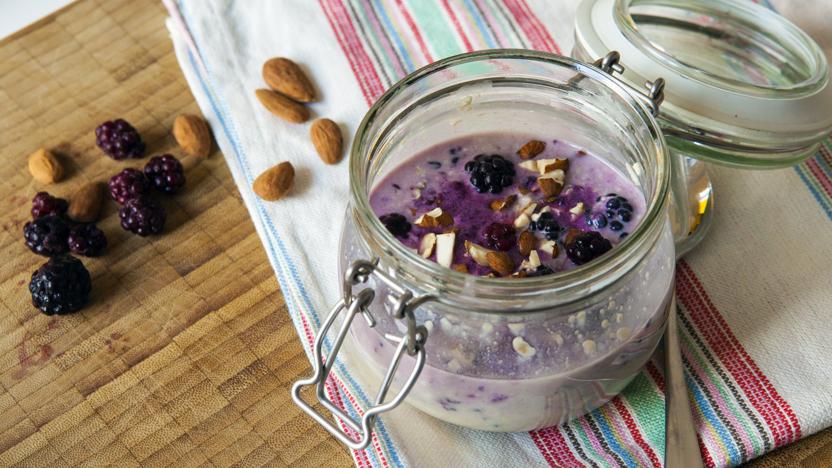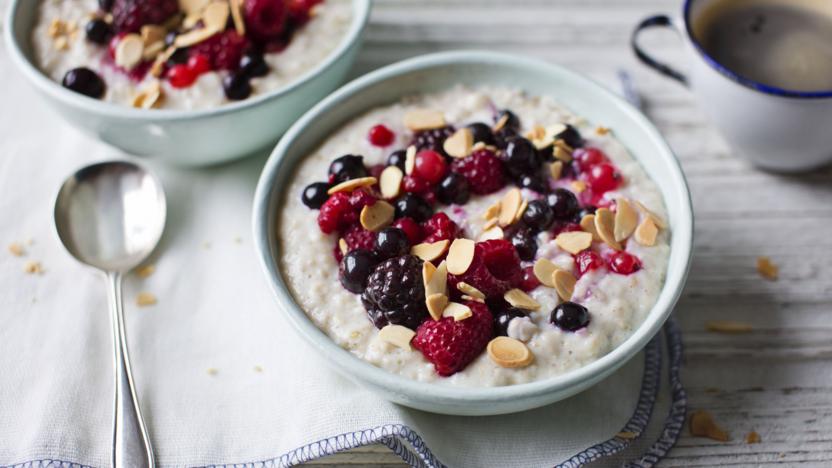Oats recipes
A Highland hero for centuries, oats are the healthy, slow energy-release cereal that we can't wait to smother with sugar, treacle or cream.
Making your own healthy granola is surprisingly easy, and cheap! Dr Rupy's recipe tastes great with berry compôte and yoghurt, and it's well under £1 per portion. Customise it with whatever nuts, seeds and dried fruits you need to use up in the cupboard.
Use the egg yolks for a batch of Mary Berry's custard.or a rich crème brûlée.
Each serving provides 377 kcal, 12g protein, 54g carbohydrate (of which 30g sugars), 11g fat (of which 3g saturates), 7g fibre and 0.2g salt.
More oats recipes
Buyer's guide
If you prefer a slightly smoother consistency, choose standard rolled oats (they cook a little more quickly, too) which have a medium grain. This is also a good grade of oat for making oatcakes, biscuits or stuffing.
Scotch oats, which are also referred to as 'pinhead oats' are chopped, rather than rolled into small pieces and they are chewier than rolled oats. They are used for the most traditional method of cooking porridge, but they take much longer to cook than any other type of oat.
It's worth noting, though, that all varieties of oats have the same nutritional value. So, if you're in a hurry at breakfast and microwave porridge is your only option, you're still getting all the health benefits. However, if you have the chance, take the time to enjoy a therapeutic session of creating the gooey, creamy mixture the traditional way.
Oatcakes are another cupboard staple in the Scottish household. Again, the flavour and consistency of the finished oatcake depends on the size and variety of oats used in the recipe. They're simple to make and the homemade variety often look and taste far more enjoyable than the ready-made varieties. Many Scots who still follow the tradition of high tea will include oatcakes, perhaps served with a chunk of Scottish cheddar or with a slice of smoked salmon. Or, for a truly Scottish treat, try a serving of haggis with oatcakes and a glass of whi
Preparation
The most common porridge oats are rolled, rather than crushed during processing. The oats determine how hearty the finished porridge will be and how long it will take to cook. Basically, the finer the oat, the quicker the cooking time. That's why the instant porridge varieties, which are made from fine oats, tend to have an almost powder-like consistency.
But if you want your porridge quick, but not instant, opt for traditional, thick, whole oat flakes if you like a distinctive flavour and a substantial start to the day. Whole oat flakes are not cut before they are rolled, so they remain the bulkiest of the rolled oats.
Oats are frequently used as a cooking ingredient, as in haggis and some varieties of sausage, or as a coating for herring or in dumplings. Oats can also be used in a variety of sweet treats, such as oat cookies or as an alternative crumble topping. For something traditional try the creamy, oaty dessert called cranachan. Scottish oats are toasted to a golden brown colour, before they are combined with fresh whipped cream, Perthshire soft berries and whisky to make a creamy dessert.



































